Caring For Amaryllis Grown In Water: Learn About Growing Amaryllis In Water
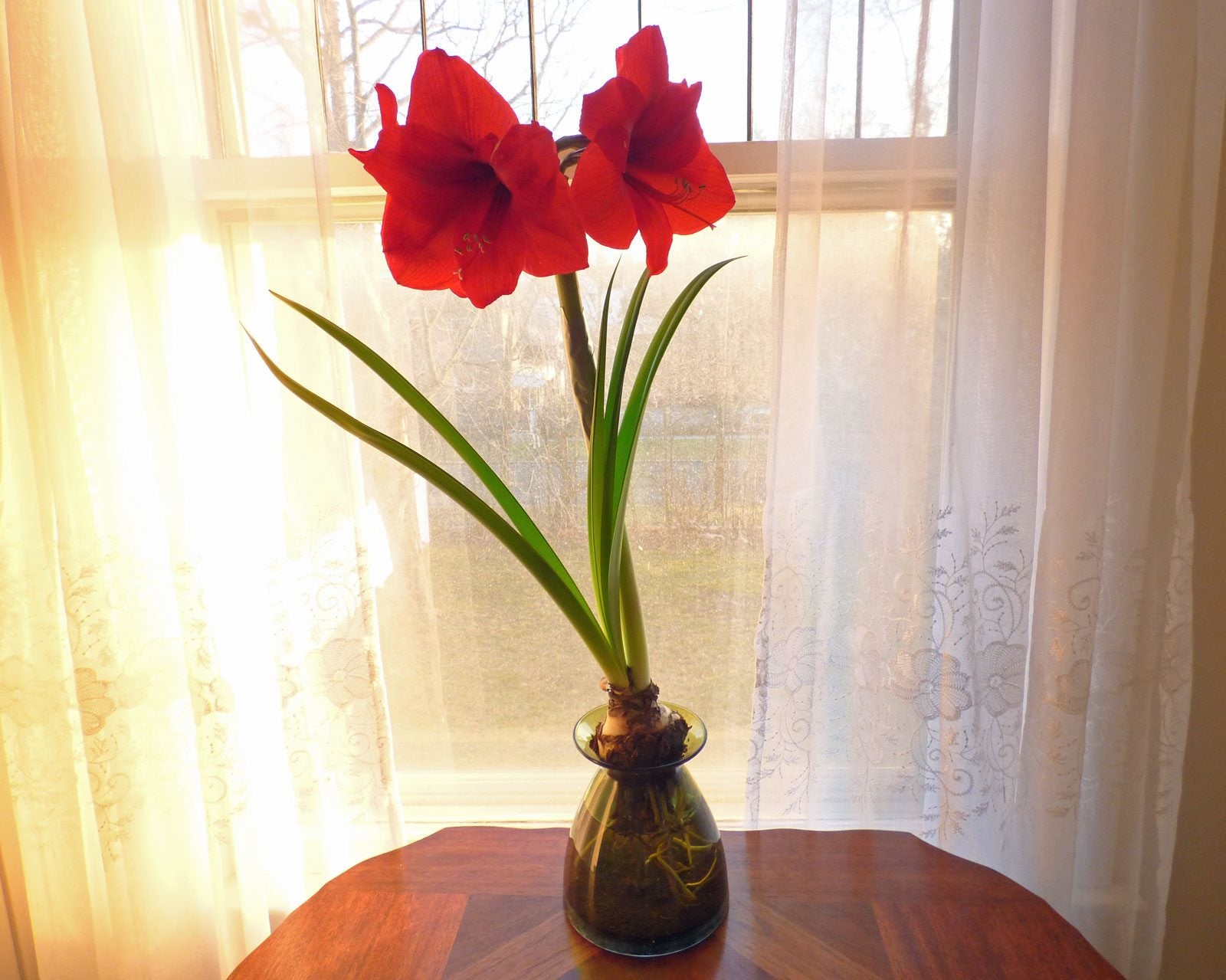

Did you know that amaryllis will grow happily in water? It’s true, and with suitable care of amaryllis in water, the plant will even bloom abundantly. Of course, the bulbs cannot remain in this environment long term, but it’s a great way to enjoy the showy flowers over winter when all else looks dreary. Want to learn more about amaryllis care for bulbs grown in water? Read on.
Amaryllis Bulbs and Water
Although most amaryllis bulbs are forced indoors using soil, they can also be easily rooted and grown in water too. The main thing to keep in mind when growing amaryllis in water is not to let the bulb itself come in contact with the water, as this will promote rot. So how then is it done, you ask. With the use of a jar specifically designed for forcing bulbs in water, you’ll be amazed at just how easy it is to force an amaryllis in water. While there are specialized kits available that make this endeavor easier, it’s not necessary. All you need is an amaryllis bulb, a vase or jar slightly larger than the bulb, some gravel or pebbles, and water. In some instances, the gravel stones aren’t even needed, but I feel it looks more attractive.
Growing Amaryllis in Water
Once you have everything you need, it’s time to place your bulb in the vase. Begin by adding the gravel, pebbles, or decorative stones. Depending on the type of jar used, this may be about 4 inches (10 cm.) deep or 2/3 - 3/4 of the way full. Some people also like to add aquarium charcoal to the gravel, which helps to prevent odors. Prepare your bulb by trimming off any dry, brown roots. You want the roots of amaryllis bulbs in water to be fleshy and white. Now place the bulb root side down on the gravel medium, pushing it slightly into them but leaving the top third of the bulb exposed. Add water to about an inch (2.5 cm.) below the base of the bulb. This is important. The base of the bulb and roots should be the only parts touching the water; otherwise, rotting of the bulb will occur.
Amaryllis in Water Care
The care of amaryllis in water begins after planting.
- Place your jar in a sunny windowsill.
- Maintain temps of at least 60 to 75 degrees F. (15-23 C.), as the bulb depends on the warmth to help with sprouting.
- Keep an eye on the water level, check daily, and add as needed – changing the water once a week is preferable.
Within a few weeks to a month or so, you should begin noticing a small shoot emerging from the top of your amaryllis bulb. You should also see more root growth within the gravels. Rotate the vase as you would for any houseplant to promote even growth. If all goes well and it receives plenty of light, your amaryllis plant should eventually bloom. Once the flowers fade, however, you’ll need to either transplant the amaryllis to soil for continual growth or you have the option of tossing it out. Amaryllis grown in water doesn’t always perform as well as those grown in soil, but it’s still a worthwhile project. That being said, if you do decide to continue growing your amaryllis plant, it may take a couple of years before it reblooms.
Gardening tips, videos, info and more delivered right to your inbox!
Sign up for the Gardening Know How newsletter today and receive a free copy of our e-book "How to Grow Delicious Tomatoes".

Nikki Tilley has been gardening for nearly three decades. The former Senior Editor and Archivist of Gardening Know How, Nikki has also authored six gardening books.
-
 Looking For Plants To Give You The Soft And Fuzzies? Try These 5 Fuzzy Leaf Plant Options
Looking For Plants To Give You The Soft And Fuzzies? Try These 5 Fuzzy Leaf Plant OptionsLovers of texture, drama, silver foliage and tactile plants will adore these special sensory garden additions. These fuzzy leaf plant options will leave you all aglow
By Susan Albert
-
 Get Ready For A Summer Of Hummers! Grow These Full Sun Hummingbird Plants and Flowers
Get Ready For A Summer Of Hummers! Grow These Full Sun Hummingbird Plants and FlowersIf you’re lucky enough to enjoy a sunny backyard, make sure you are maxing out on your pollinator opportunities and grow these full sun hummingbird plants and flowers
By Tonya Barnett
-
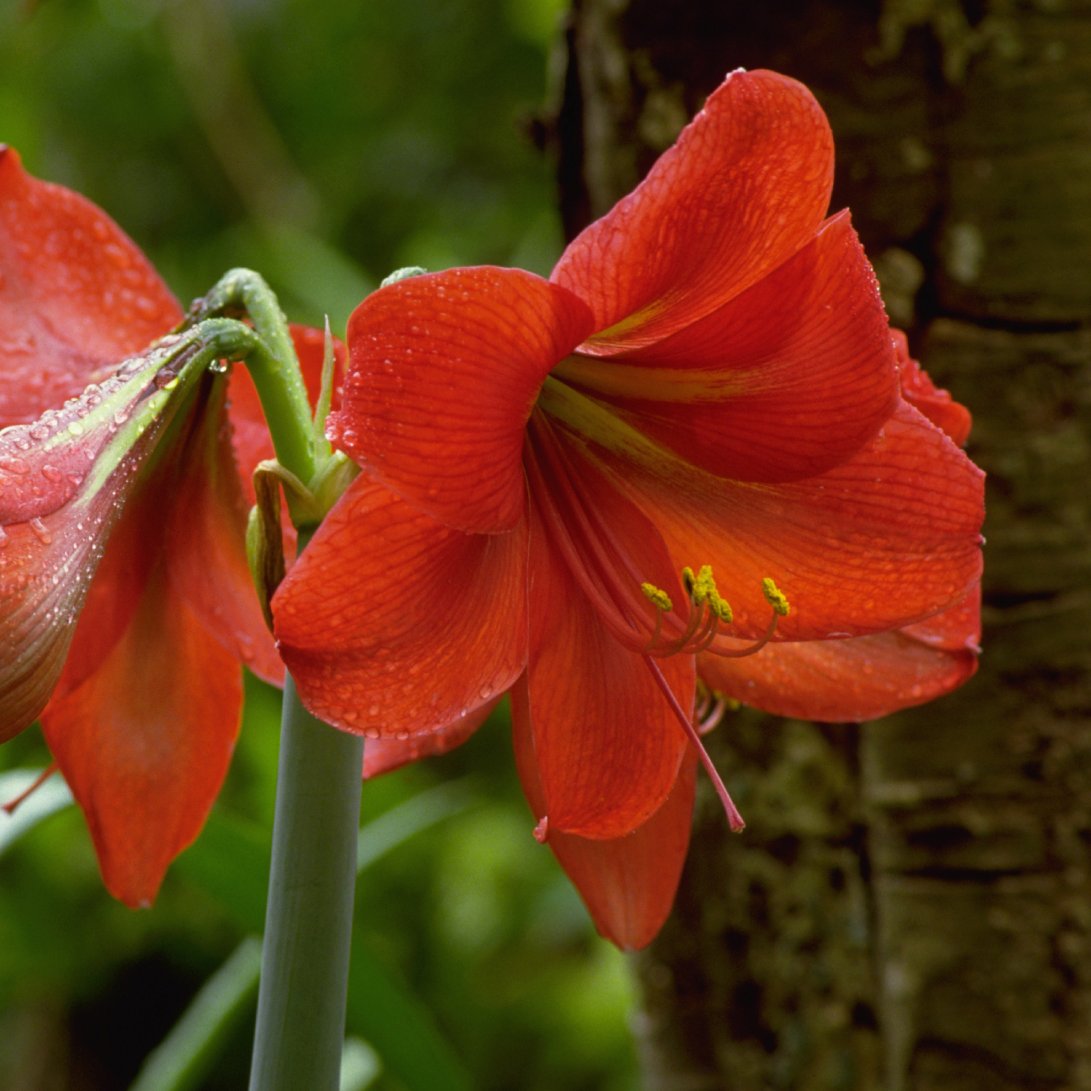 Amaryllis Southern Blight Disease: Recognizing Amaryllis Southern Blight Symptoms
Amaryllis Southern Blight Disease: Recognizing Amaryllis Southern Blight SymptomsBy Mary Ellen Ellis
-
 Amaryllis Has Leaf Scorch – Controlling Red Blotch Of Amaryllis Plants
Amaryllis Has Leaf Scorch – Controlling Red Blotch Of Amaryllis PlantsBy Tonya Barnett
-
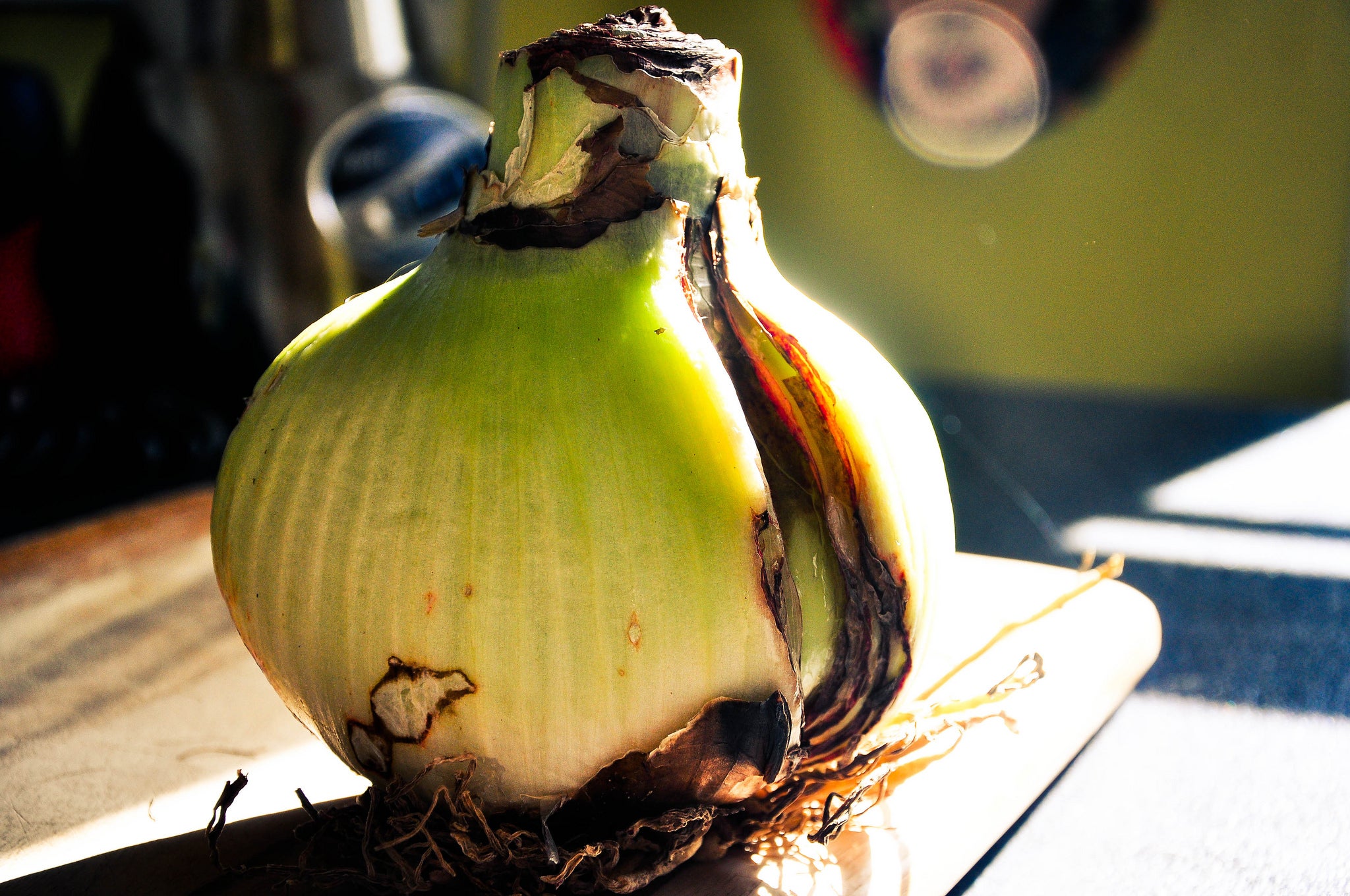 Amaryllis Bulb Rot – What Causes Rotten Amaryllis Bulbs
Amaryllis Bulb Rot – What Causes Rotten Amaryllis BulbsLike many potted plants, diseases and issues related to fungal infections can be detrimental to the development of the plant and may even cause it to die before it is able to bloom. Amaryllis bulb rot is one such issue. Learn more about this problem in the following article.
By Tonya Barnett
-
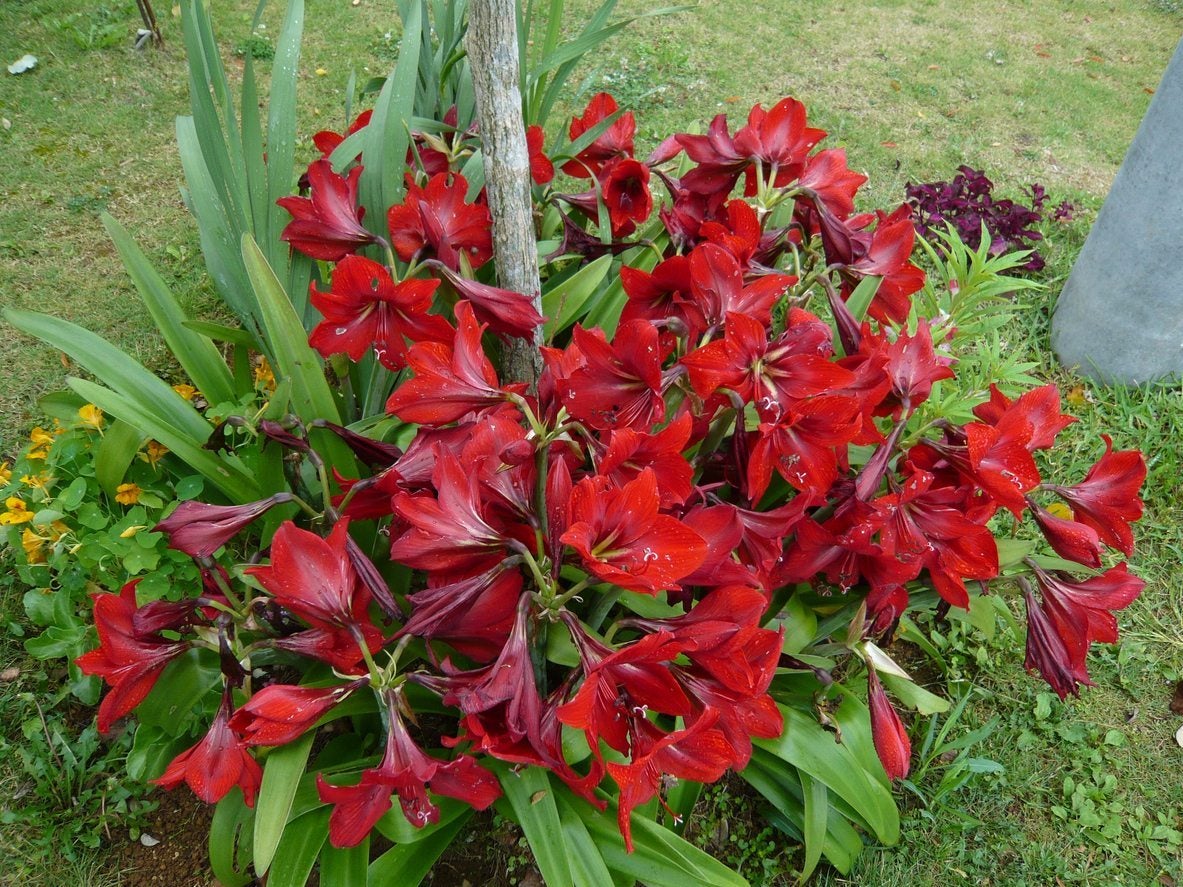 Separating Amaryllis Plants: How To Divide Amaryllis Bulbs In The Garden
Separating Amaryllis Plants: How To Divide Amaryllis Bulbs In The GardenLike many bulbs, in time and with the right environmental conditions, outdoor amaryllis bulbs will reproduce and naturalize. Amaryllis plant division is not only a way to control amaryllis colonies, but it also keeps plants healthy. Click here to learn more.
By Darcy Larum
-
 Complete Guide To Repotting Amaryllis – For Better Blooms & A Healthier Plant
Complete Guide To Repotting Amaryllis – For Better Blooms & A Healthier PlantAmaryllis plants don't need a lot of elbow room, but they do have to be repotted every 3-5 years. Wait until they're dormant and pick a slightly bigger pot.
By Teo Spengler
-
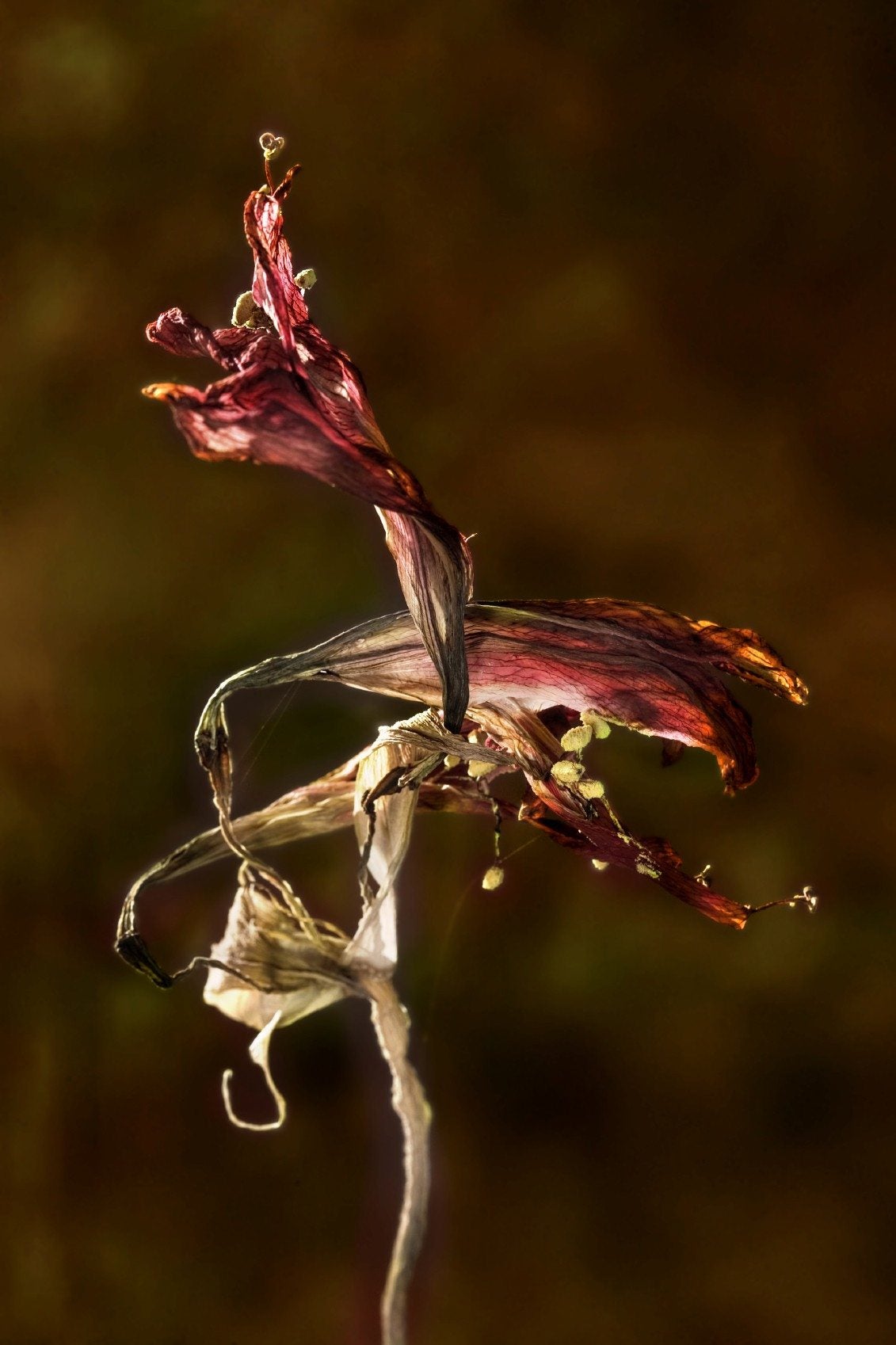 Amaryllis Seed Propagation: How To Plant An Amaryllis Seed
Amaryllis Seed Propagation: How To Plant An Amaryllis SeedIf you have some patience, you can produce and germinate your own amaryllis seed pods. Learn more about amaryllis seed propagation and how to plant an amaryllis seed in the article that follows. Click here for more information.
By Liz Baessler
-
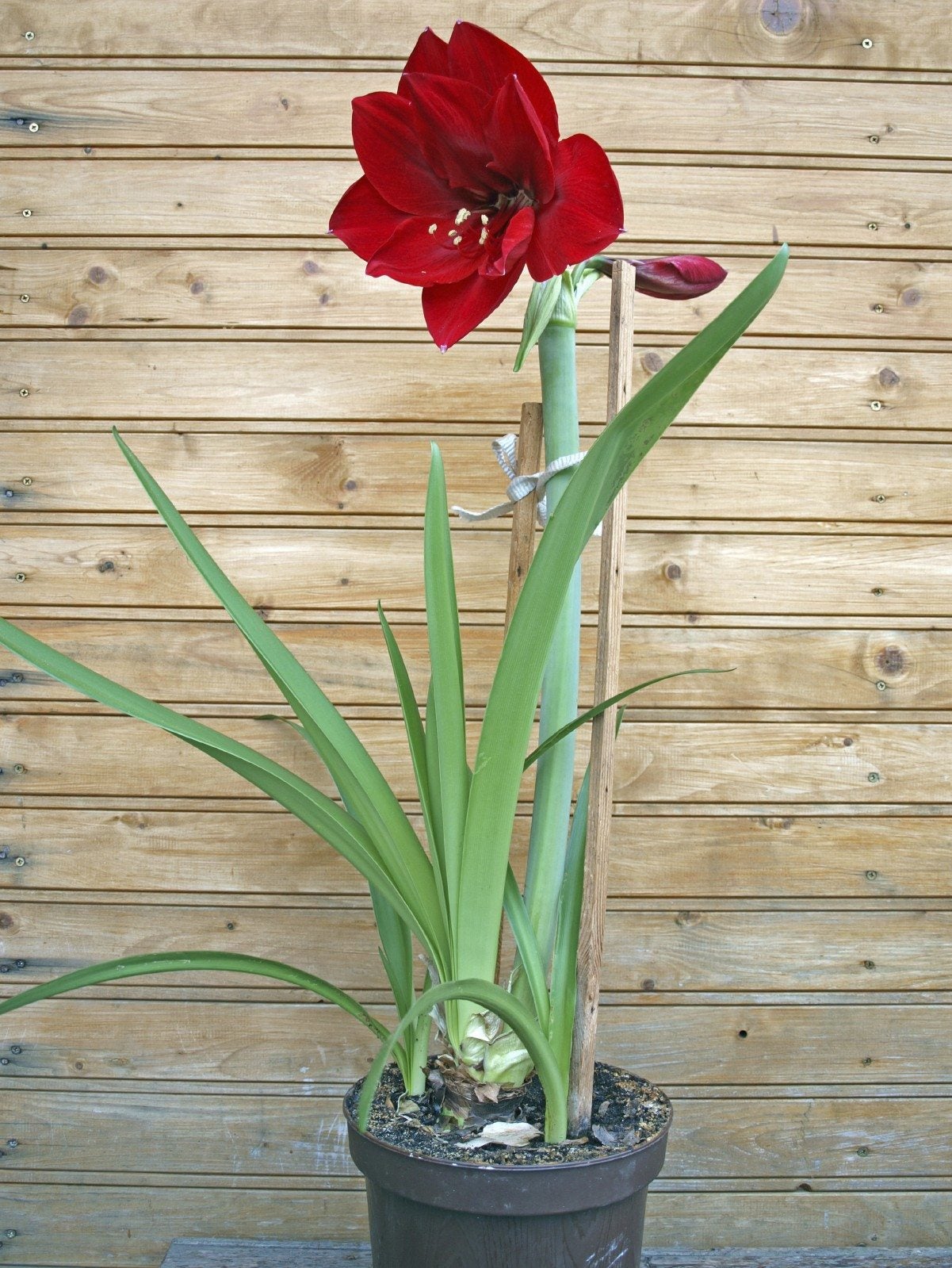 Staking An Amaryllis: Types Of Amaryllis Support Stakes
Staking An Amaryllis: Types Of Amaryllis Support StakesThe tall amaryllis stalks grow from bulbs, and each stalk bears four huge blooms. If your blooming plant gets top-heavy, you might need to learn about staking an amaryllis. Click this article for information about what to use for amaryllis plant support.
By Teo Spengler
-
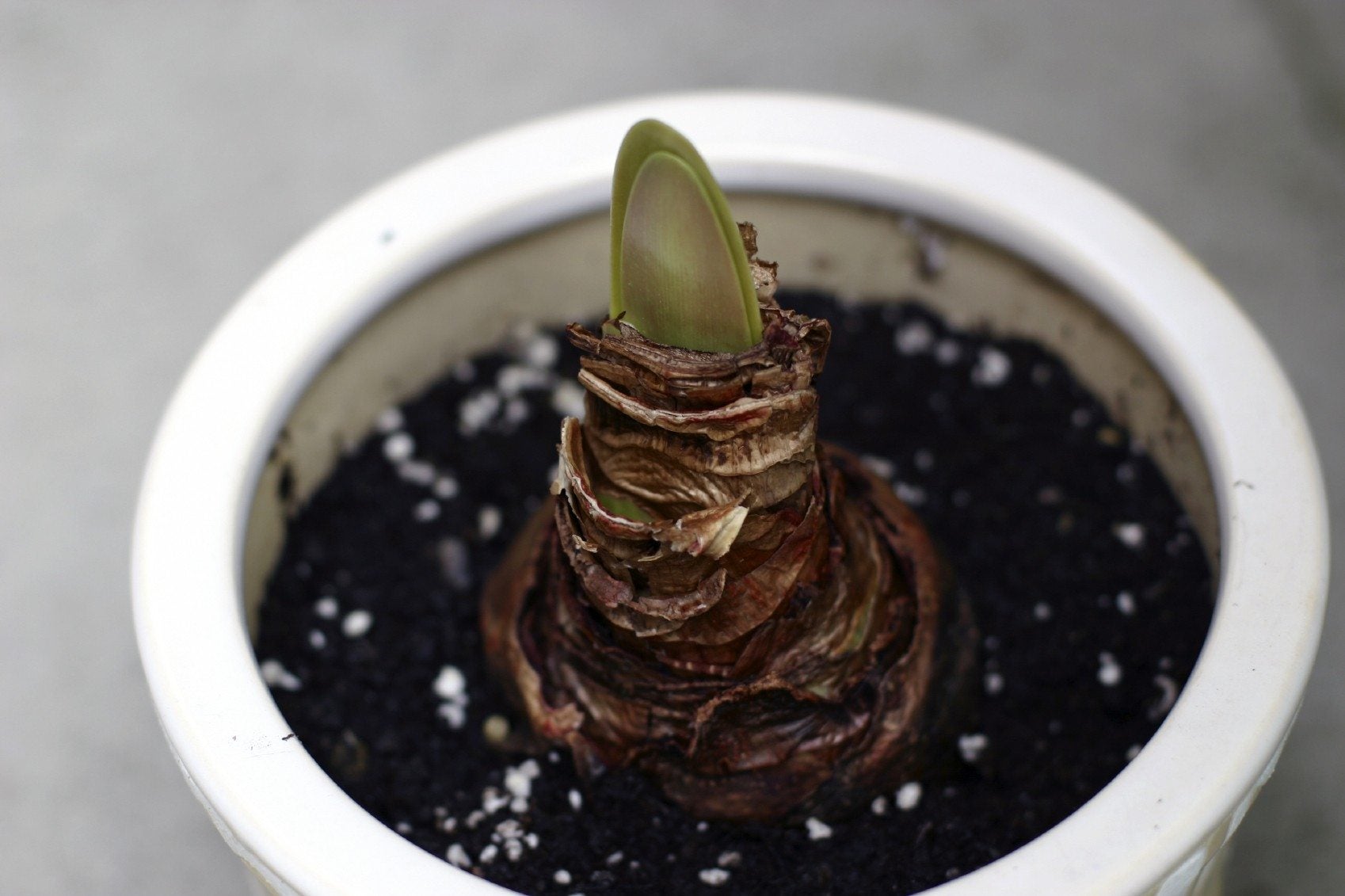 Soil For Amaryllis Plants – What Kind Of Soil Does Amaryllis Need
Soil For Amaryllis Plants – What Kind Of Soil Does Amaryllis NeedBecause it blooms in winter or early spring, amaryllis is almost always kept in a pot indoors, so you have more say in the kind of soil it grows in. So what kind of soil does amaryllis need? Learn about amaryllis soil requirements in this article.
By Liz Baessler